 Thomas Vernier, Renault’s vice-president of aftersales logistics (above), talks about the OEM’s attempts to make network cost savings while improving customer service around the world, as well as the opportunities to further integrate logistics and distribution within the Renault Nissan Alliance
Thomas Vernier, Renault’s vice-president of aftersales logistics (above), talks about the OEM’s attempts to make network cost savings while improving customer service around the world, as well as the opportunities to further integrate logistics and distribution within the Renault Nissan Alliance
Renault has been setting, and achieving, ambitious sales growth, cost cutting and geographic expansion targets in recent years as part of its ‘Drive the Change 2016’ plan. Logistics plays a significant part in this overall strategy, whether for connecting global supply chains between Europe, North Africa and India, or moving vehicles in volatile markets like Russia or South America.
In the aftermarket and spare parts arena too, logistics is a major focus for improving material flows from suppliers to the carmaker’s global network, as well as for increasing labour and handling productivity across the company’s roughly 1m sq.m of warehouse space. It is also critically essential to service rates to dealers, whether they are in Paris or New Delhi.
In this story
Renault has also been moving increasingly towards shared aftermarket logistics functions and operations with its alliance partner, Nissan, including combined warehousing, common transport tenders and administration, and joint expansions in new markets. These combinations follow other successful examples where Renault and Nissan have combined supply chain and logistics operations, notably across Europe for inbound and outbound logistics with its Alliance Logistics Europe function. While significant parts of the aftermarket chain do and will remain separate, the carmakers continue to pursue an alliance strategy wherever it is mutually beneficial.
At the helm of Renault’s aftermarket logistics since 2013 has been Thomas Vernier, vice-president of aftersales logistics and supply chain, a 20-plus years Renault veteran who has held a variety of posts across Renault and Alliance Logistics for inbound, production and outbound logistics. He brings with him a desire for precision – he wants to see inbound-like stability and accuracy in spare parts – as well as a readiness to make changes or investments where it improves customer service or logistics efficiency. For example, he has embraced technology to better integrate warehouses and improve dealer inventory through retail inventory management (RIM) tools. Clearly, he points out, if the dealership has the right stock at the right time, emergency orders and premium freight will decrease, and fluctuation in the supply chain will be lessened.
Renault has invested in tools to generate procurement requests automatically and has succeeded in decreasing its stock level drastically without affecting the service rate in comparison to other carmakers. “In Europe, our stock level is half that of our strongest competitors for the same level of service,” he reports.
Vernier has also been tackling costs as part of ‘Drive the Change’, which includes annual price reduction targets across the supply chain. “We want to reduce logistics costs by more than 10%, down to less than 8% of the turnover,” he says.
These are not simple tasks. Vernier leads an organisation with a global scope, including nearly 30 warehouses in 25 countries, and serving many more. “Customs clearance regulations are the complicated part of the process with new flows worldwide,” says Vernier, pointing to regulations requiring precision on parts’ weight and descriptions. “On the surface, this may seem straightforward enough, but in fact it may be highly complex depending on the resources and regulations that are in place,” he notes.
At the local level, meanwhile, truck transport must be both fast, and optimal, with routes engineered to avoid wasteful trips while maintaining daily deliveries to most dealers. Customer service, points out Vernier, is a top priority, and following successful cost reductions the carmaker is looking at investments that will serve dealers even better, such as increasing available inventory and opening more local warehouses in markets like India.
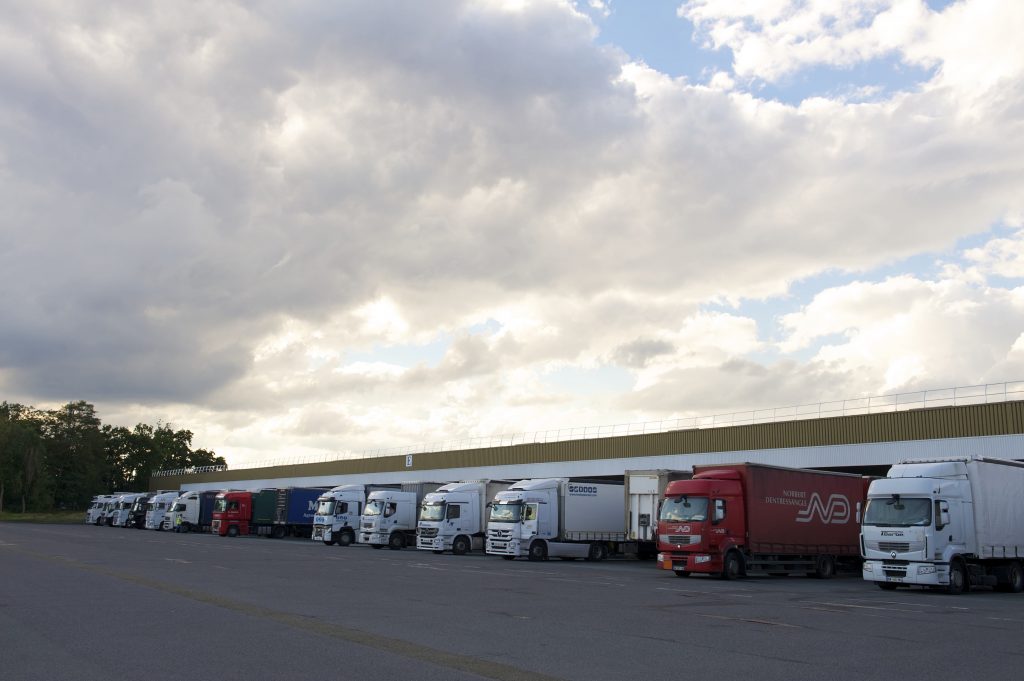
Renault’s aftersales logistics organisation is responsible for the procurement, storage, and delivery of aftersales parts for the multi-brand Renault Group, which includes Renault and Dacia, as well as Renault Samsung in South Korea. The department also serves Renault’s wider vehicle and engine production partners, which along with Nissan includes General Motors, with which Renault shares van production, and Daimler, which has a variety of cross-production and supply agreements with Renault Nissan, including assembly in France and Slovenia.
Renault’s aftersales logistics department covers forecasting, procurement, stock management, warehousing, transport management, customer service and documentation. Spare parts are shipped from distribution centres to dealerships as well as to 100 importers in the countries in which Renault does not have subsidiaries. It supports dealer performance by ensuring parts availability to customers, providing dead-stock management and other functions.
Renault uses a hub-and-spoke system to serve worldwide markets, with 29 warehouses in locations following its regional organisation: France-Europe, Eurasia, South America, Africa and Asia Pacific. Renault’s highest concentration is in western Europe, where it has 12 warehouses, including five in France (although several operate as a single entity). Another six are in eastern Europe and Turkey.
Within this global network, five facilities are Renault’s main warehouses, also called ‘source warehouses’, which receive parts and material directly from plants and suppliers, then feed smaller, regional facilities. One of the carmaker’s primary source warehouses is in the Paris area, and is made up of four separate facilities. The other source warehouses are located in Romania, Brazil, Argentina and South Korea. Among them, Vernier says that its Romanian facility has been growing the most following the success of the Dacia brand, which has its main plant in Pitesti and is produced globally, including models at major plants in Tangier, Morocco, Moscow, Russia and Chennai, India. Each of Renault’s source warehouses handles more than 200,000 part numbers.
The other regional facilities, positioned across 21 countries, maintain approximately 60,000 part numbers that aim to cover 95% of local demand. While Renault maintains stock of most of its spare parts in regional warehouses, the carmaker also arranges for suppliers to ship directly to the dealerships for certain commodities, such as tyres. “Storing and shipping such commodities would otherwise consume a large amount of warehouse space,” says Vernier.
Vernier, who cut his teeth on the precision planning and delivery processes for Renault’s production plants and inbound logistics, has targets this year to introduce the same processes used for vehicle assembly to the company’s spare parts warehouse management. With such a large amount of space, it is essential that the company optimises the use of its warehouse assets, he says.
“We continuously look at stock movement with the objective of compacting storage areas and organising storage to improve internal productivity. We must examine stock quality and be able to manage both the faster moving parts and slower moving parts more effectively,” says Vernier.
Costs savings are a big part of the company’s objectives in the aftermarket, as well as across other supply chain areas. However, customer service is closely factored into operations. Vernier points to the need to increase delivery frequency to dealerships and improve service fill rates at dealerships and across the network. As part of ‘Drive the Change’, the department’s goal is to reach a global service rate of 95% – a metric that consists of lead-time and order accuracy in terms of quantity and quality (and is also dependent on the amount of inventory kept in warehouses). For most of its dealerships, Renault is already surpassing levels of 94% – but that extra percentage can make a huge difference over such a a large volume.
Part of achieving such penetration is through investment in further warehouses and logistics services where necessary. In India, despite its large size and poor roads, Vernier wants to match global standards for customer delivery and is already looking to expand its warehouse network in the country. “India is a key challenge within Renault’s three-year plan,” he says. “Here we have decided, jointly with Nissan, to open regional warehouses, in addition to our Chennai warehouse, in order to be closer to our customers and reduce our delivery lead times.”
With the establishment of regional warehouses in India, Vernier says Renault will be able to deliver to Mumbai and Delhi within 48 hours before the end of 2016.
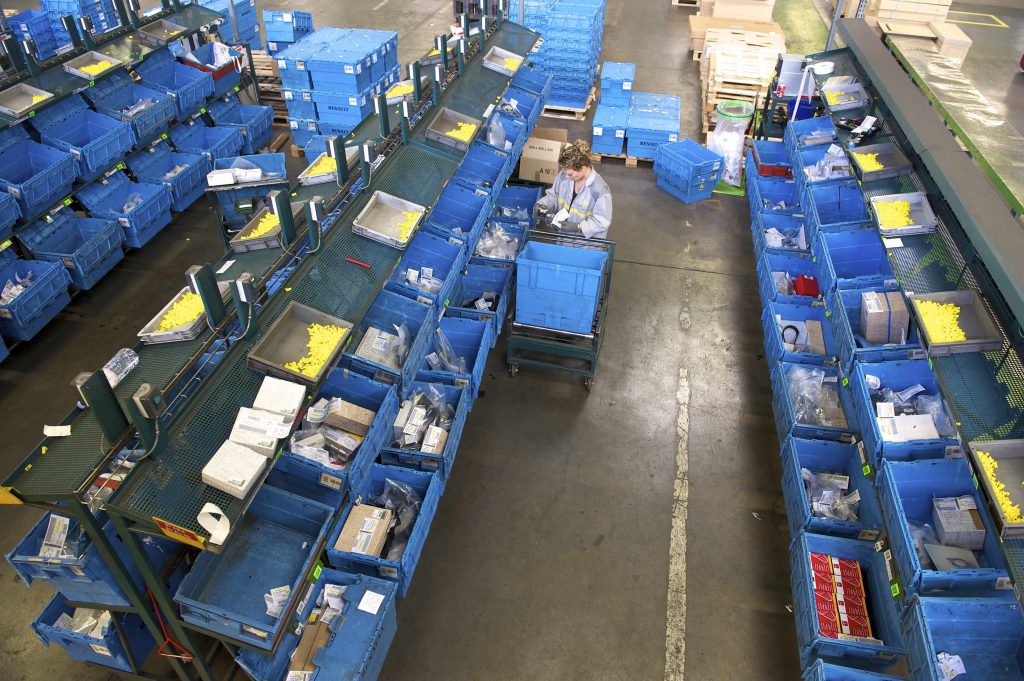
In line with these objectives is further integration across the 16-year-old Renault Nissan Alliance. The development of this sharing is evident at the parts warehouses. Renault and Nissan share about 50% of their warehouses using the same suppliers or doing cross-operations, or providing space and labour. For example, in the UK, Japan, Mexico, and one example in Italy, Nissan operates the warehouse that it shares with Renault (although in Mexico, operations are outsourced to third-party provider Ryder). Conversely, in Hungary, Slovenia, Romania and in Milan, Italy, Renault operates the spare parts facility for Nissan.
“Most of the shared operations are in regional warehouses, as source warehouse activity is very specific,” says Vernier.
Shared operations are often driven by the market presence of either brand, with the first brand in a country usually taking the lead in operations. “During the past ten years, key Alliance developments have occurred in new markets such as Russia, India and China,” says Vernier. “When the Alliance enters a new market, we always rely on the first of the two companies that began operating there. This is the case in India and China, where Nissan is currently supporting Renault’s start of aftersales operations.”
However, even in those markets, as evidenced by the pursuit of further warehouses in India, Renault will look to work with Nissan where relevant to expand.
In Europe, where both brands have a long history and have considerably more overlap, there are more efforts to bring logistics together, especially as legacy systems and arrangements are phased out. “New synergies are made when contracts reach their deadlines,” says Vernier.
Renault and the Alliance have a mixed approach to outsourcing labour and handling at its warehouses. While the vast majority in Europe are operated directly by Renault or Nissan, most in other regions are operated by 3PLs. Among the shared facilities, for example, 3PLs operate warehouses in Russia, Sweden, China, India and Mexico. In all these examples, Renault and Nissan share the same 3PL providers at the warehouses to reduce complexity and increase opportunities for sharing, although warehouse contracting is done separately. This synergy with providers can also extend to transport operations. The Russian facility, for example, is operated by DSV Solutions, which handles parts from the same supplier for both Renault and Nissan through separate operations and contracts.
Even where there are 3PLs, Vernier points to a careful division of labour and for key planning and control functions to remain with the carmaker. “We handle critical knowledge functions such as procurement or inventory control in-house,” he says. “We subcontract only warehouse operations such as picking, and mostly in the newer markets such as Russia, China, Brazil and Argentina.”
Overall, Renault uses seven 3PLs to manage operations in eight countries. This reflects its strategy to use partners with regional expertise and not rely too heavily on one company to handle too large a share of its outsourced warehousing. For the transport function, Renault works with its carriers directly, rather than bundling through a 3PL. “However, we do tenders on a regular basis as a means of checking our performance level,” says Vernier.
Somewhat differently to warehousing, Renault and Nissan transport tenders are done jointly, worldwide. Renault delivers around 1m parts daily to all of its customers, and the benefits of better rates and service through economies of scale are significant. Around 10% of flows move by ocean containers.
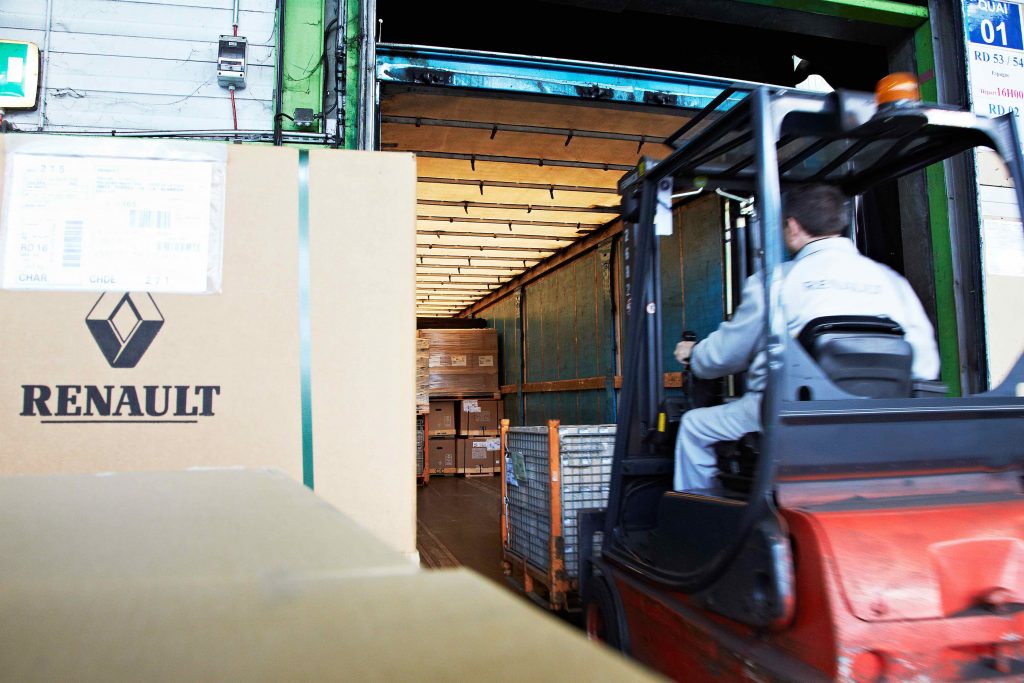
Renault looks to make daily deliveries to dealers wherever possible, and thus encourages a stable flow of orders from them. Generally, it offers two different service levels. Emergency orders may be placed daily by 4.30pm for delivery by 8am the next day to Europe, South Korea and North Africa. While it is a service that Vernier recognises is important to dealers, his target is to improve inventory management and accuracy to reduce such orders, which can be costly.
On the other hand, Renault delivers its stock orders within one week, with an average lead-time of about five days, though this varies considerably by region. For example, for Europe and South Korea, the average lead-time is 2-3 days. In countries such as Brazil, India, or China, deliveries could take one week as the average distances are greater. In India, Chennai takes less time since its warehouse is nearby, but service to Mumbai or Delhi takes six or seven days, according to Vernier, a lead-time which is prompting the investment in new warehouses.
Drilling deeper into Renault’s network reveals further tiers, with some services devolved across regional dealerships, so that many customers are actually getting their parts much faster and more frequently than the lead-time for a stock order would suggest. The carmaker has a designated set of main dealers, known as ‘R1 dealers’, which act as service providers to the rest of the network and provide multiple deliveries per day to their own customers. Vernier says that Renault’s R1 network accounts for 50% of its overall dealership network globally, with a strong concentration in Europe. A daily renewal of R1 dealerships’ stock is working well, although Renault evaluates regularly whether there is interest in increasing this frequency.
Vernier admits that up to now during its company-wide strategy, Renault has been focused on reducing its costs, which he believes are now at a benchmark level in Europe with competing carmakers. Perhaps it is even the time to consider increasing frequency as a strategic investment.
“We now are reconsidering the frequency of deliveries for stock orders to dealers because they need to adapt to market fluctuation,” he says. “With increased customer service requirements worldwide, we are looking for global improvement. This may mean renewing stock orders more frequently than once weekly, to two or more times weekly.”
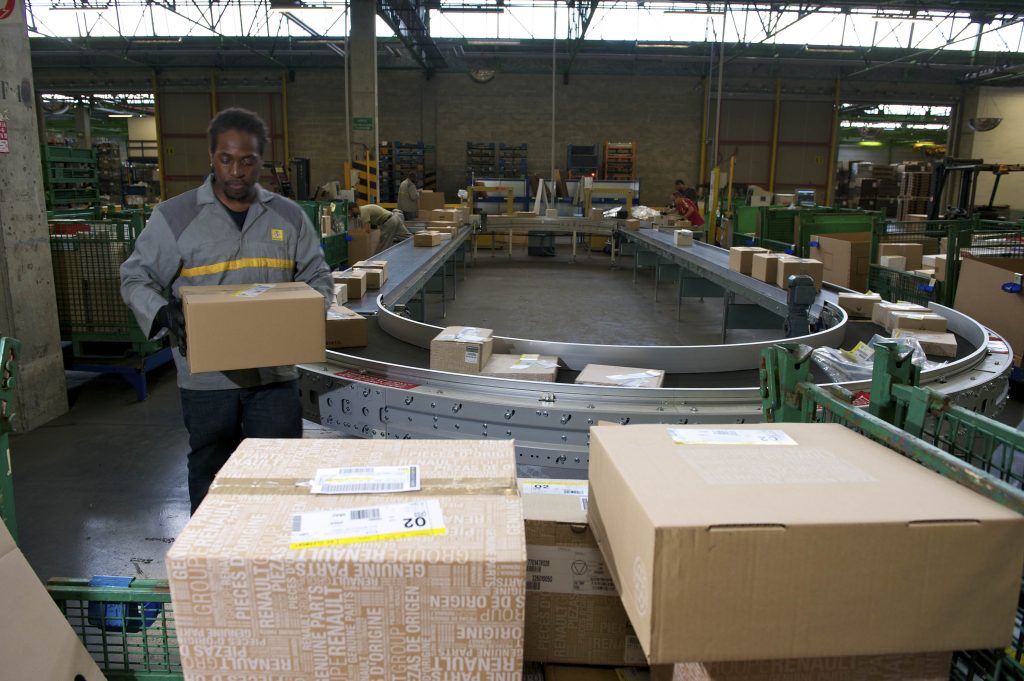
Increasing the service rate to dealers also entails optimising logistics upstream, from suppliers to the source warehouses and from there to the regional warehouses. In some cases, there are supplier capacity issues that can hold back deliveries to source warehouses, especially when there is tight supply between aftermarket and factories.
“The main challenge is to obtain the parts from our suppliers. For the suppliers, aftersales production does not have the same priority compared to mass production of new vehicles,” Vernier says. “This must change quickly because the impact on customer loyalty is significant when you are unable to provide the expected spare parts.”
Vernier says the way to improve this situation is to consider an integrated supply chain from the suppliers to the final customers, such as sharing forecasts with marketing and purchasing departments to gain a global view of worldwide stock, including at the supplier level, and developing RIM systems for dealerships. Renault also needs to improve its invoicing and custom clearance processes continuously. “To summarise, logistics must become more agile,” he says.
Vernier says that to minimise its supplier issues, purchasing and procurement rules for aftersales parts would need to be finalised in the early stage of the supplier relationship. “Furthermore, we are now beginning to consider aftersales performance of a supplier as a criterion for allocating new business to them,” he points out. “We need to consider improving our forecasts to help suppliers anticipate their investments better, while furthermore we need to work closely with dealerships to assist with their stock management.”
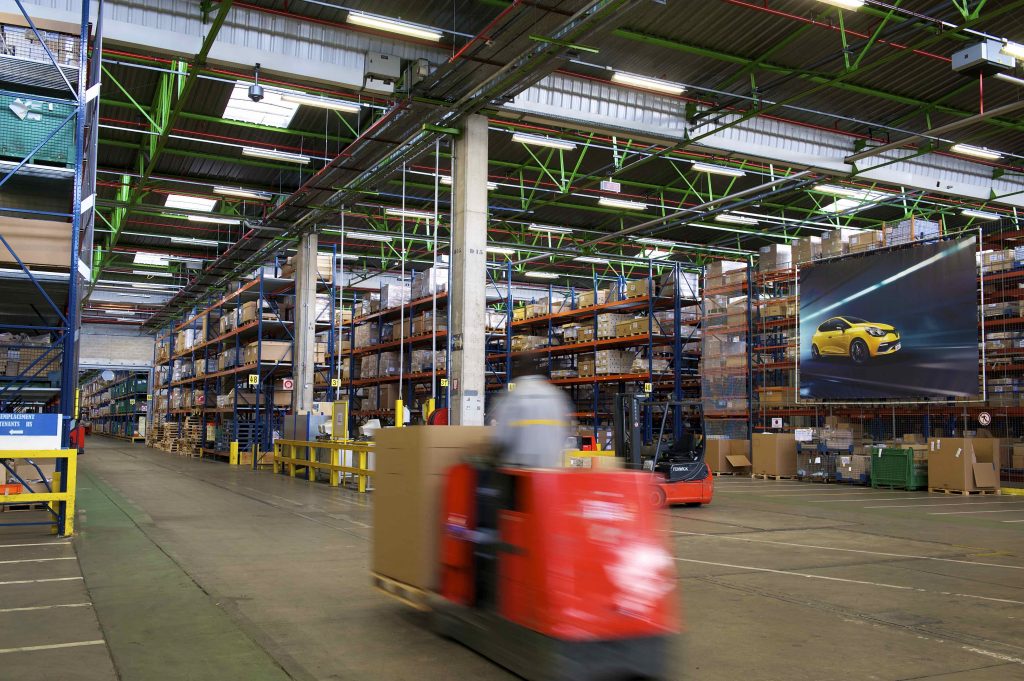
To Vernier, there is no question that IT systems will play a further role in improving spare parts logistics. Renault has recently launched a renewal programme for its systems together with Nissan, which has been important in guaranteeing the flexibility and quality of services to its customers. The IT systems help to optimise procurement and stock management. “Now we are moving a step ahead in order to improve the global efficiency of our warehouse management system and of our global stock capacity. We have launched an analysis and diagnostics system in order to help us achieve these objectives,” he says.
Vernier is also concerned with making sure that Renault’s spare parts logistics are as market-driven as possible. In some cases, that has meant looking carefully at supplier flows to make sure unnecessary and wasteful transport can be avoided, or that legacy flows via France are cut out, for example. Again, it is an exercise that benefits from sharing resource and network planning with Nissan and other alliance partners. “One of the purposes of this type of improvement is to reduce lead times from suppliers to markets. For example, we have implemented direct flows from Turkey to Russia because of these changes,” he says. “The initial flow was Turkey to France to Russia. We reduced the lead times by half and significantly reduced transport costs by between 3-5% per year.”
Systemic improvements have enabled Renault to maintain a stock level of 30-40% less than that of its leading competitors without sacrificing service, according to Vernier.
He and his department have fully embraced Renault’s globalised network and service scope. Vernier remains committed to bringing further improvements over the coming years, from purchasing processes for parts and logistics, to how invoicing works across regional warehouses. In future, he also thinks that logistics will need to respond further to a changing consumer base and its habits, including the ability to purchase parts or service their vehicles using smartphone applications. “Supply chain and logistics functions are made to support business development. Renault’s service parts logistics will evolve in this regard. We are currently studying how to support ecommerce developments,” says Vernier.
Renault’s aftersales network is, and will remain, complex; its global scope is set to expand further as the brand grows further in Chinese and Asian markets; as in India, it is also likely to increase its local penetration. However, Renault’s alliance with Nissan continues to be a useful buffer and resource tool for improving logistics efficiency throughout its worldwide network. With ‘Drive the Change 2016’ nearly at an end, the carmaker is sure to be driving through even more transformations well into the future.

























![Global[1]](https://d3n5uof8vony13.cloudfront.net/Pictures/web/a/d/s/global1_726550.svgz)









